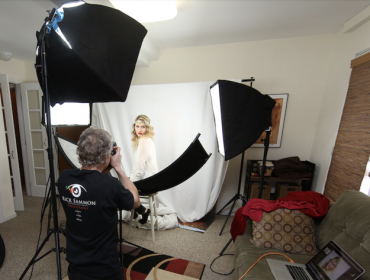Although it seems like just yesterday that the world was watching the Summer Olympics, the Winter Olympics — slated to begin on February 4, 2022, in Beijing — are right around the corner.
Featuring thrilling performances from the world’s elite athletes, the Olympics bring the best of the best to a global stage. But who captures these moments for the world to see?
Enter Olympic sports photographers.
These hard-working professionals endure long days in all kinds of weather to memorialize athletes’ once-in-a-lifetime moments. And as photographers, they are an elite group all their own. But what does it take to get to that level?
In this article, we’ll go behind the scenes with Annice Lyn, a renowned female documentary sports photographer who was named to Forbes 30 Under 30 Asia 2021 and has been photographing the winter Olympics since 2018.

Getting Started as a Sports Photographer
Before becoming a photographer, Lyn was already immersed in the world of competitive sports. She competed as a national figure skater in Malaysia before a knee injury prevented her from further competition.
Photography provided a way for Lyn to stay connected with the skating community. She made it her mission to document the hard work that goes into figure skating as a way to raise the profile of the sport.
“During my days of competing, I often saved up to buy my competition photos. But, to my dismay, the photos did not do our [hard work] justice,” said Lyn. “Starting from humble beginnings with no formal photography training, I developed a passion for visual storytelling…in hopes to capture the action and compelling moments.”


Journey to the Olympics
Although Lyn was familiar with the athletic world, she still faced a long journey to the Olympics. After leaving figure skating, she began covering local sports competitions as a way to practice her photography.
Her advice?
“Start by championing your local sports association — believe in budding athletes. You never know where they will be in two, three, or five-years’ time. As they improve, you and your skills in photography improve as well.”
While covering community sports, Lyn built a portfolio and was eventually invited to photograph the Southeast Asian Games and the Four Continent Championships, among other events, before becoming an accredited Olympic photographer in 2018.

The Olympic Experience
For most, making it to the Olympics is a momentous occasion all its own. However, Lyn’s first Olympics — PyeongChang 2018 — held a deeper meaning for her. Those 2018 games marked Malaysia’s first appearance in the Winter Olympics, including the debut of the country’s first Olympic figure skater, Julian Lee Zhi-Jie.
“As a figure skater and a Malaysian myself, it was incredibly special to get the opportunity to capture our nation’s debut and every moment throughout the winter Olympic games,” said Lyn.

Stamina is Key
Yes, photographing the Olympics is an honor, but it’s also hard work. Covering the events involves a strenuous schedule — often with only a few hours to sleep — along with uncertain mealtimes and the intense physical demands of carrying gear.
Lyn said that her key to avoiding burnout and keeping her composure under pressure was ensuring she was physically and mentally fit. To achieve this, she offers some unusual advice.
“Weigh in an estimated amount and weight of your gear…and go to the gym and do weight training. [With this training], you’ll be able to handle the job given to you, as well as build your stamina.”
She also suggested packing healthy snacks like energy bars to stay fueled while in the stadium. Another important tip: don’t forget to hydrate!

Breaking Boundaries
Lyn’s work at the Olympics didn’t just break ground as a representative of Malaysia. She is also blazing a path for women looking to grow within the industry that’s long been dominated by men.
Of the 2,309 press credentials distributed for PyeongChang, 80 percent went to men. Only 544 (19.1 percent) were women, and Lyn was one of just 77 accredited female photographers at the games.
“While gender equality has grown leaps and bounds in recent years, these statistics illustrate that inequality still persists in the realm of visual culture,” she said. “Being part of the minority motivates me to be a representative and grow the female photography community.”
Though there’s still work to be done in this regard, Lyn shared that she did see an increase in visibility of female photographers during her coverage of the Tokyo 2020 Olympics, and hopes the landscape of the industry will continue to evolve.

Gear for Sports Photography
When we asked Lyn about her go-to gear, she shared an extensive list of equipment she uses to capture her images:
- Canon EOS R5
- EF200-400mm f/4L IS USM Extender 1.4x
- RF 70-200mm f/2.8L IS USM
- RF 28-70mm f/2L USM
- EF 16-35mm f/2.8l iii usm
- EF 8–15mm f/4L FISHEYE USM

As you can see, she’s got quite the quiver of Canon products — and it’s easy to see why. Lyn is the current Canon Malaysia Youth Ambassador. Even better that, she’s long been a Canon brand advocate.
“Canon isn’t just about being one of the primarily trusted camera brands out there. [They are] also heavily invested in making better photographers. I truly believe Canon is trusted as a creative enabler.”
Ready to try your hand at the Olympics? Learn more about Olympics photography in this article from professional photojournalist Jamie Squire.






